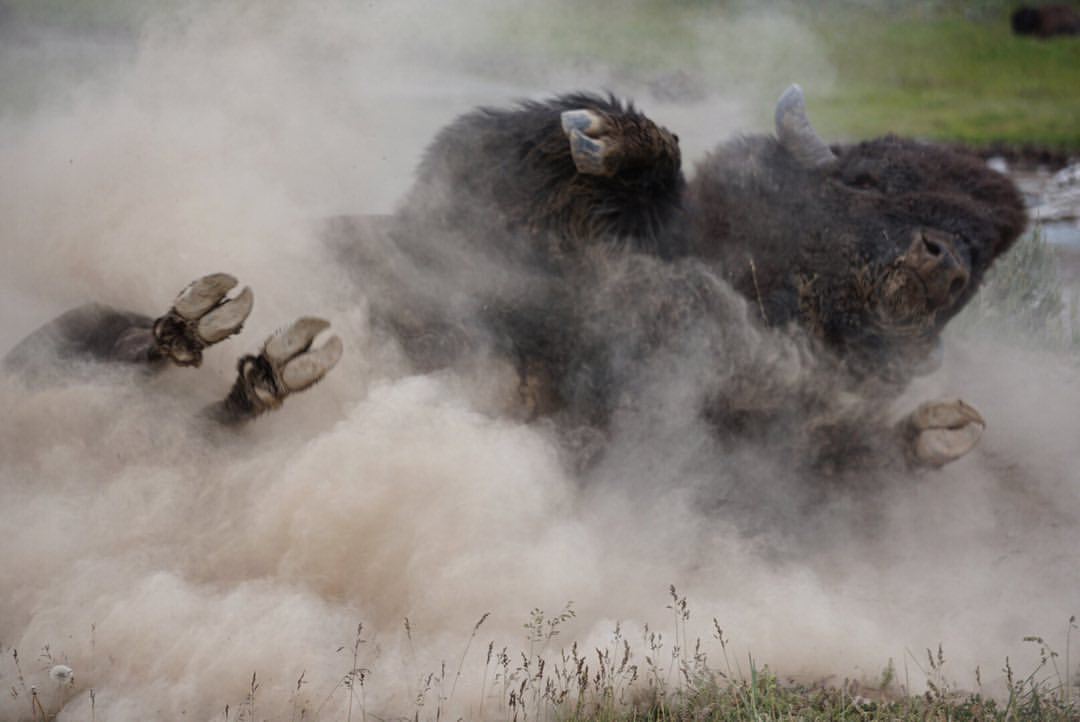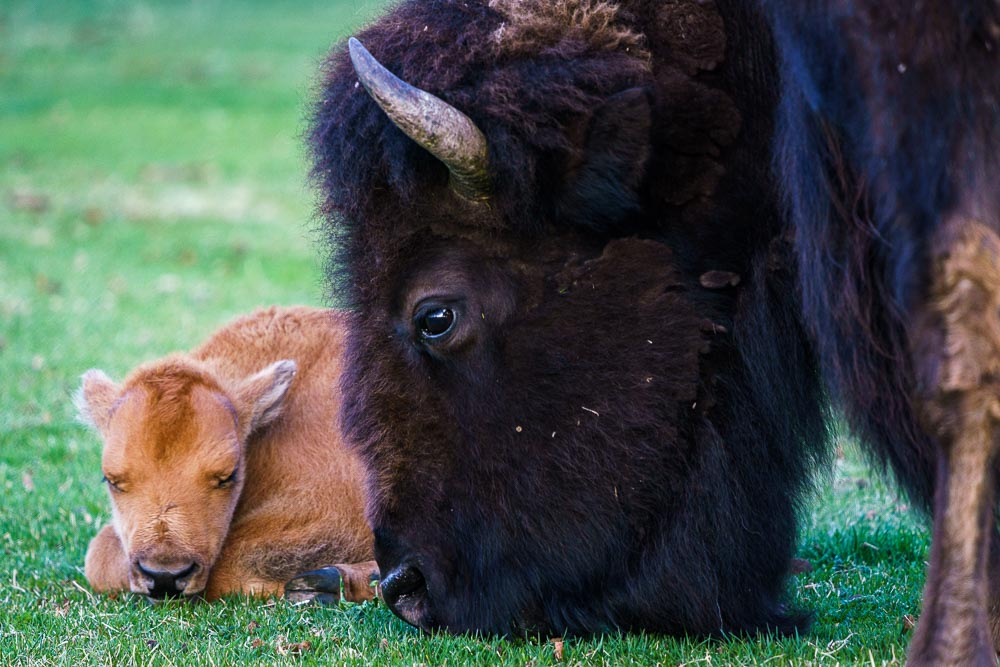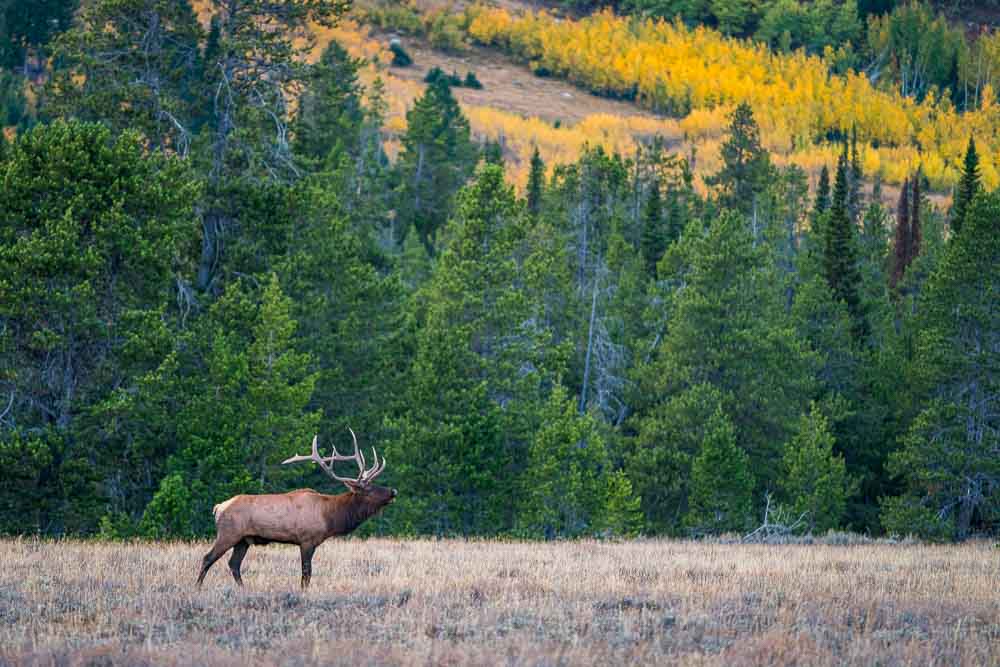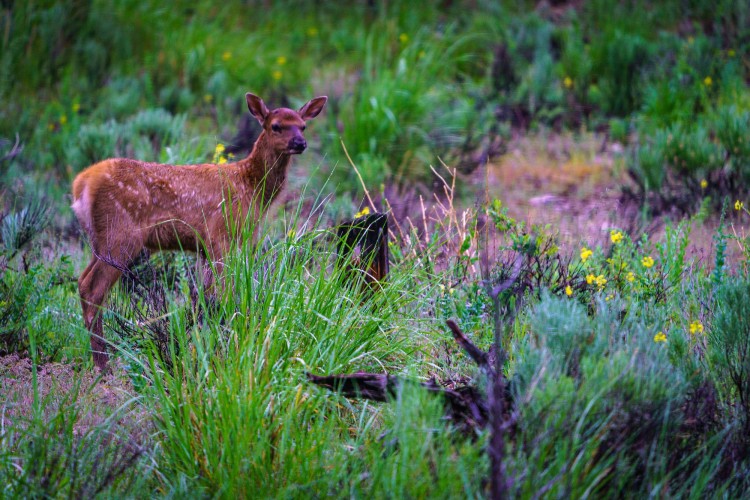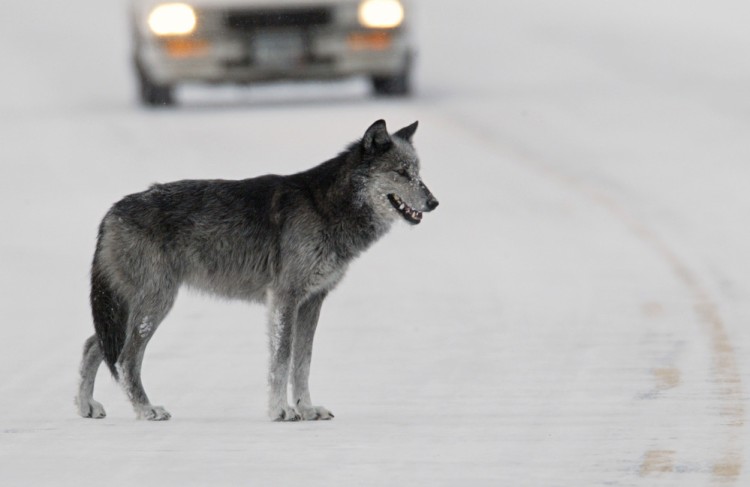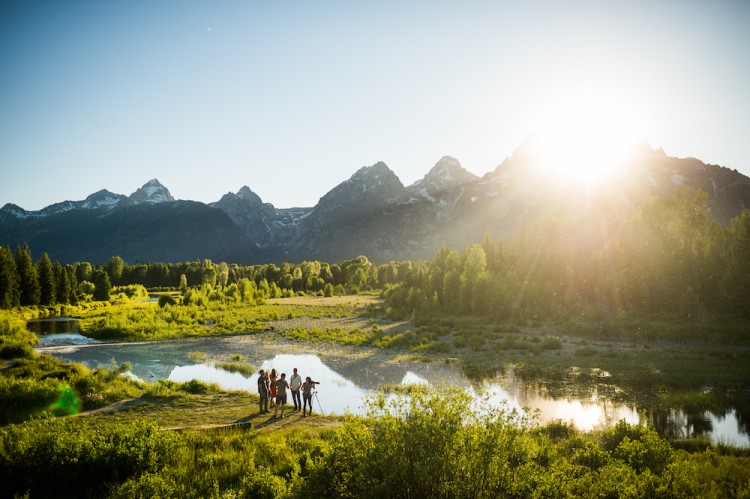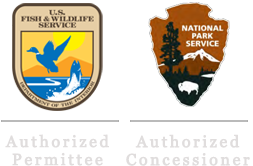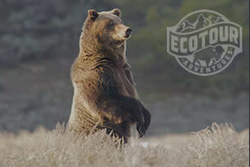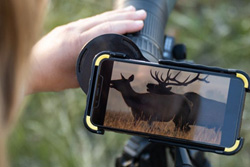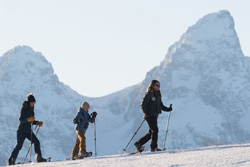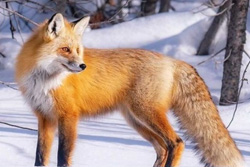6 Cool Facts about the Yellowstone Bison Rut!
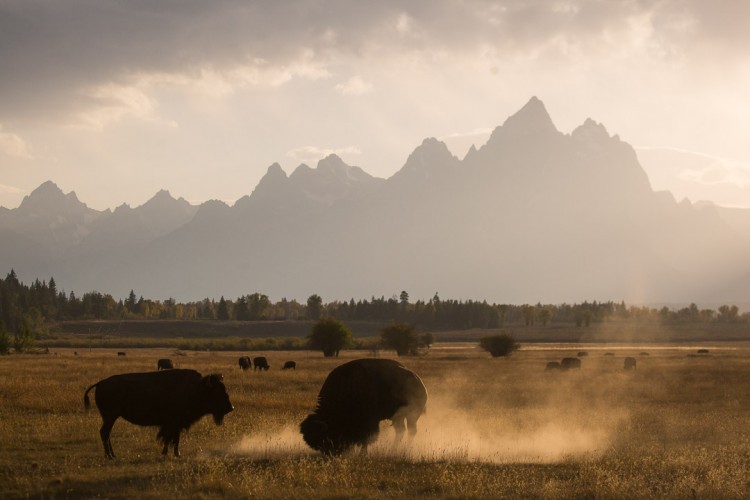
It’s Angry August in the Greater Yellowstone Ecosystem and the bison rut is at its peak! 2000 lb giants bellow, kick dirt and engage in sometimes deadly contests for dominance and the chance to mate. The Yellowstone Bison rut, or mating season is one of our favorite annual events to experience (from a distance or the safety of our safari style vehicles!), here are some interesting facts about it!
1. Bison Pee Tells a Story
Yes you read that right, bison read each other’s “peemail.” When a big bull bison drops to the ground and rolls in a dusty wallow he's also urinating, spreading his scent around for all to smell. Gross right? This behavior can help tell others the bulls identity, how old he is, and his dominance status in the herd! Bison also have a special gland that humans dont which allows them to smell the urine of a female and detect if she is in estrus, or receptive to mating! This is a useful skill we’ll talk more about later.
2. Tail Up = Charge or Discharge!
Though bison are especially vocal during the rut, much of their communication is non verbal, and watching their tails is one of the best ways to tell what they are up to! In general, the higher a bison’s tail gets, the more agitated and potentially aggressive it is becoming. This is a good sign for us to learn in order to avoid being charged!
Other physical traits that can indicate aggression towards another bison or other animal include pawing and rubbing their head on the ground, rolling in a wallow, and bellowing. If you observe these behaviors, watch out!
A bull bison kicks up dust while rolling in a wallow. Photo by ETA Naturalist @kirkkryder
3. Bison Fights Can be Deadly.
All the posturing and non verbal communication we just talked about is an effort by bison to avoid a physical confrontation by establishing dominance. However, if one bull won’t back down, these challenges will become violent. The power of two 2000 lb animals colliding at full speed can shake the ground, inevitably leading to injury and death. One study found upwards of 50% of bull bison had evidence of previous injuries sustained in fights with other bison such as cracked ribs, or healed broken bones.
The August bison rut comes at a lean time for carnivores such as wolves and grizzly bears. By late summer, most prey animals are at their peak health for the year and are much harder to hunt. When bull bison do end up killing each other a bounty of food is provided, and it isn’t uncommon to see multiple grizzlies, wolves, coyotes, eagles, ravens, magpies and other species gather for the feast! There is no waste in nature.
Junction Butte Wolves feed on a rut killed bison Carcass in Yellowstone's Northern Range. Spotting scope video by Naturalist @tyler_greenly
4. Bull Bison Lose a lot of Weight During the Rut.
All that fighting, bellowing, and tending means bull bison eat less and use more energy during the rut. Bulls can lose upwards of 200 lbs or 10% of their bodyweight as a result! Weight loss in late summer can put bulls at a disadvantage as they rely upon fat reserves from the summer months to get through the lean winter months where quality food is scarce.
5. Female Bison Pick the Bulls they Want to Mate With.
During the rut we are often focused on the loud big angry male bison yet when it comes to actual mating, it is the females who choose when and with who they will mate with. Females do select for the larger, more mature bulls, but these suitors must spend quite a bit of time tending potential mates. Remember how bison can tell if a cow is in estrus by the scent of her urine? This adaptation is quite important as cows only go into estrus for around 9-24 hours at a time and if they don’t become pregnant 3 weeks will pass before they will be receptive again!
6. Bison are Great Mothers.
The gestation period or pregnancy for bison calves lasts close to 300 days, meaning calves are among the first baby animals we see in April and May. The small rusty red calves are born just as the first green grasses of spring sprout, are on their feet within an hour and taking their first bites of solid food within a few days! Bison mothers are very protective and as a result upwards of 80% of calves survive to weaning age. This is no easy task living alongside large carnivores like grizzly bears and wolves!
A young bison calf sleeps contentedly next to its mother. Photo by Naturalist @joshmettenphoto
Experience the Bison Rut in Yellowstone!
With the largest remaining wild bison herd left on earth, Yellowstone is one of the best places in the world to experience the bison rut. Right now bison herds are concentrated in the Lamar Valley in Yellowstone and parts of Grand Teton National Park where this annual event will continue through the end of the month. Remember that bison are one of the most dangerous animals in Yellowstone, especially during the rut. Park regulations stipulate that we stay at least 25 yards away from bison, and remain inside vehicles when we are unable to do so.
The bison rut marks the end of summer and beginning of fall across the greater Yellowstone Ecosystem. We’re already seeing elk stripping velvet off of their antlers in anticipation of their mating season in September. The fall elk rut along with increased bear activity, and fall foliage are just a few reasons why we can’t wait to share Grand Teton and Yellowstone National Parks with you soon. Learn more about this upcoming season here.
Right when the bison rut begins to subside the fall elk rut begins! Photo by Naturalist @joshmettenphoto
Now in our 12th year of operation, Jackson Hole Ecotour Adventures leads wildlife safaris, cross country skiing tours, and snowshoe tours in Grand Teton and Yellowstone National Parks 365 days a year. Let us help maximize your Jackson Hole Experience Today!
Please let us know if we can help with guiding your next adventure in Grand Teton or Yellowstone National Parks by calling us 307-690-9533 or emailing info@jhecotouradventures.com.


